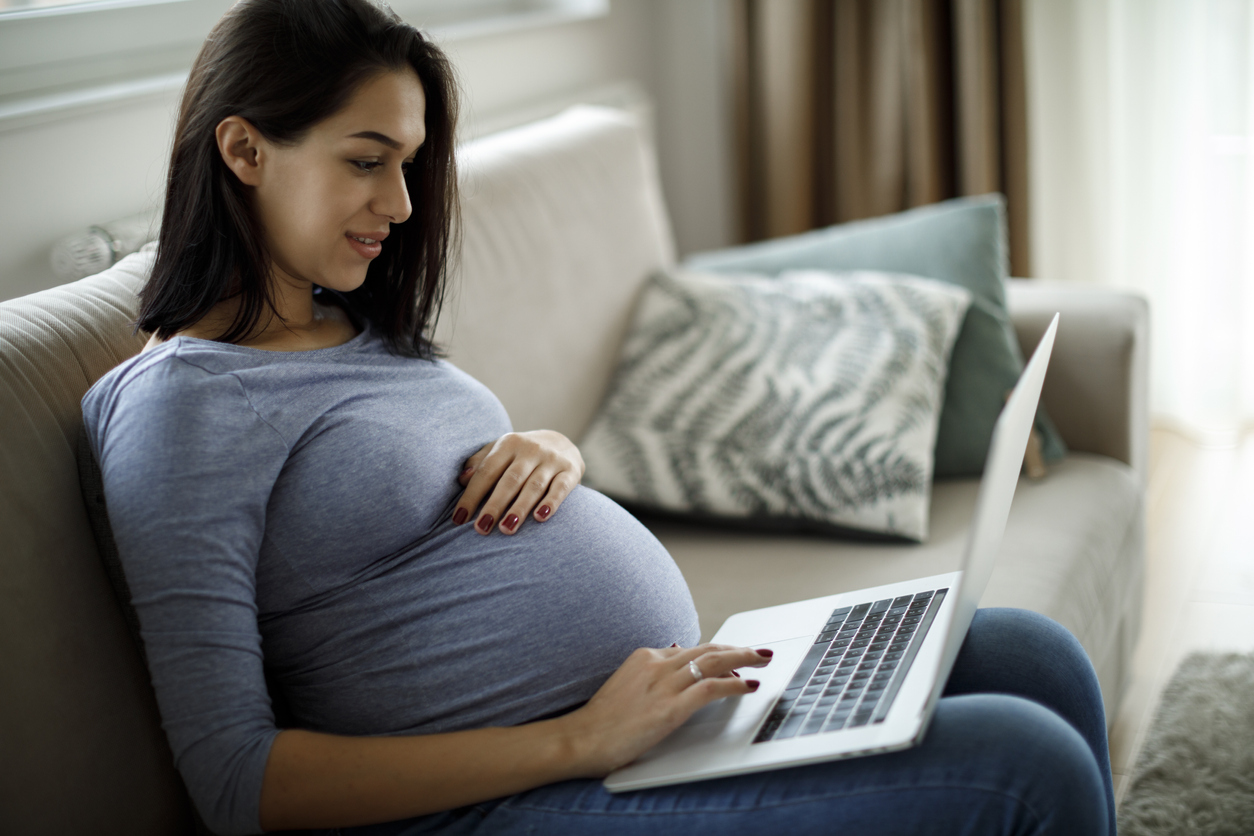If you were an active person who loved to exercise before getting pregnant, you’re likely wondering when it’s safe to resume your past activities and when pelvic floor pain will diminish. Generally, women will have a postpartum check-up with their OB and their doctor can determine if they are ready to resume normal pre-pregnancy activities.
But even after a doctor has given the green light, many women still experience pain in the groin when attempting to get back to exercising. It’s a common occurrence after pregnancy. Below we’ll take a look at common causes of pelvic pain during and after pregnancy, and treatments you can do to alleviate pain.
Causes of pelvic floor pain during pregnancy
Before we can understand postpartum pelvic floor pain and treating it, it’s helpful to understand the causes of pelvic pain during pregnancy. While a woman is pregnant, hormonal changes occur that create increased elasticity of pelvic girdle ligaments. This helps prepare a woman’s body for birth but the increased laxity and stress on joints of the pelvis can result in pain and inflammation.
The growth of the baby also causes the mother’s body to change: the low back may experience increased curvature, the upper back has increased tension, and a tilted pelvis may occur as well. All of these symptoms may cause muscle spasms, hip and/or groin pain, sciatica, and nerve compression.
Another source of pelvic pain during pregnancy is the increased pressure on pelvic floor musculature. The pelvic floor musculature changes as the pelvic girdle gets ready for birth. This puts pressure and stress on the pelvic floor muscle, which can cause pain, lower abdominal pressure, and incontinence.
Causes of pelvic floor pain after pregnancy
Childbirth is painful, but how long should postpartum pain last? Answers vary for everyone, but we can understand common, treatable causes of pelvic pain after pregnancy.
Perineal tearing: Generally, OBs advise women to wait 6 weeks after pregnancy for healing of tearing from vaginal delivery or episiotomy. But women heal at different rates and the timeframe is only a guideline. It’s common for women to still experience pain and a lack of mobility.
Muscle weakness and/or Imbalance: As we mentioned above, overstretching of the abdominal muscles and instability of the pelvis can lead to pain and discomfort during pregnancy. These changes take time to heal, as they did not happen overnight. Stretching occurred over a 9 month period, and it can take that long to return to a pre-pregnancy state.
Damage to pelvic floor musculature or abdominal musculature: Damage to these muscles occurs while delivering the baby and can make it difficult to run, lift, bend down, use the bathroom, and can generally affect mobility. Scar massage and gentle strengthening is often required to return to your prior state.
Separation of pubic bones: Separation of pubic bones is a normal part of pregnancy. It allows the baby to pass through the birthing canal. But if you experience excessive separation, it can lead to increased inflammation and pain.
Pelvic organ prolapse: Prolapse occurs when the pelvic floor musculature does not support internal organs, such as the bladder, uterus, or rectum. Prolapse can cause feelings of heaviness, pain, or bulging in the pelvis.
How to relieve pelvic pain during and after pregnancy
Breathing: Typically, the pelvic floor muscle is holding onto tension and stress. Get into a comfortable position, either by laying on your back or slightly reclined, and inhale deeply. Picture a balloon in your stomach filling with air. Exhale and allow the abdomen to lower back to its resting state. Repeat, and try to develop an awareness of your pelvic floor muscles lengthening and relaxing.
Body mechanics: It’s important to know how to lift things safely after pregnancy. Here are a few helpful tips:
- Draw your stomach in towards your spine. This will help protect your lower back and engage the pelvic floor musculature.
- Keep objects close to your body when lifting, and attempt to get as low as possible before lifting.
- Bend your knees! Use leg muscles to help reduce strain on your lower back and pelvis.
Gentle strengthening: Getting into a routine to activate muscles that will help stabilize the pelvic girdle during and after pregnancy will help treat pain:
- Activate deep abdominal muscles by exhaling and pulling your belly button towards your spine.
- Contract glute muscles by squeezing your buttocks together
- Engage pelvic floor muscles around the vagina by lifting and squeezing, as if attempting to stop the flow of urine.
Posture: Your posture can be a key differentiator in minimizing tension during and after pregnancy. Keep your shoulders and neck relaxed as much as possible. Utilize back support when you can, especially while nursing. If you’re standing for a prolonged period of time, engage those glutes and deep abdominal muscles to reduce curvature of the low back.
Unfortunately, symptoms of pelvic floor pair are regularly brushed off as normal side effects of pregnancy. But a licensed physical therapist can provide guidance on how to reduce pain through education, gentle exercises, and improved body mechanics. Agile Virtual PT’s team of experienced and licensed PTs can help! Schedule an appointment today and live life without pain.

